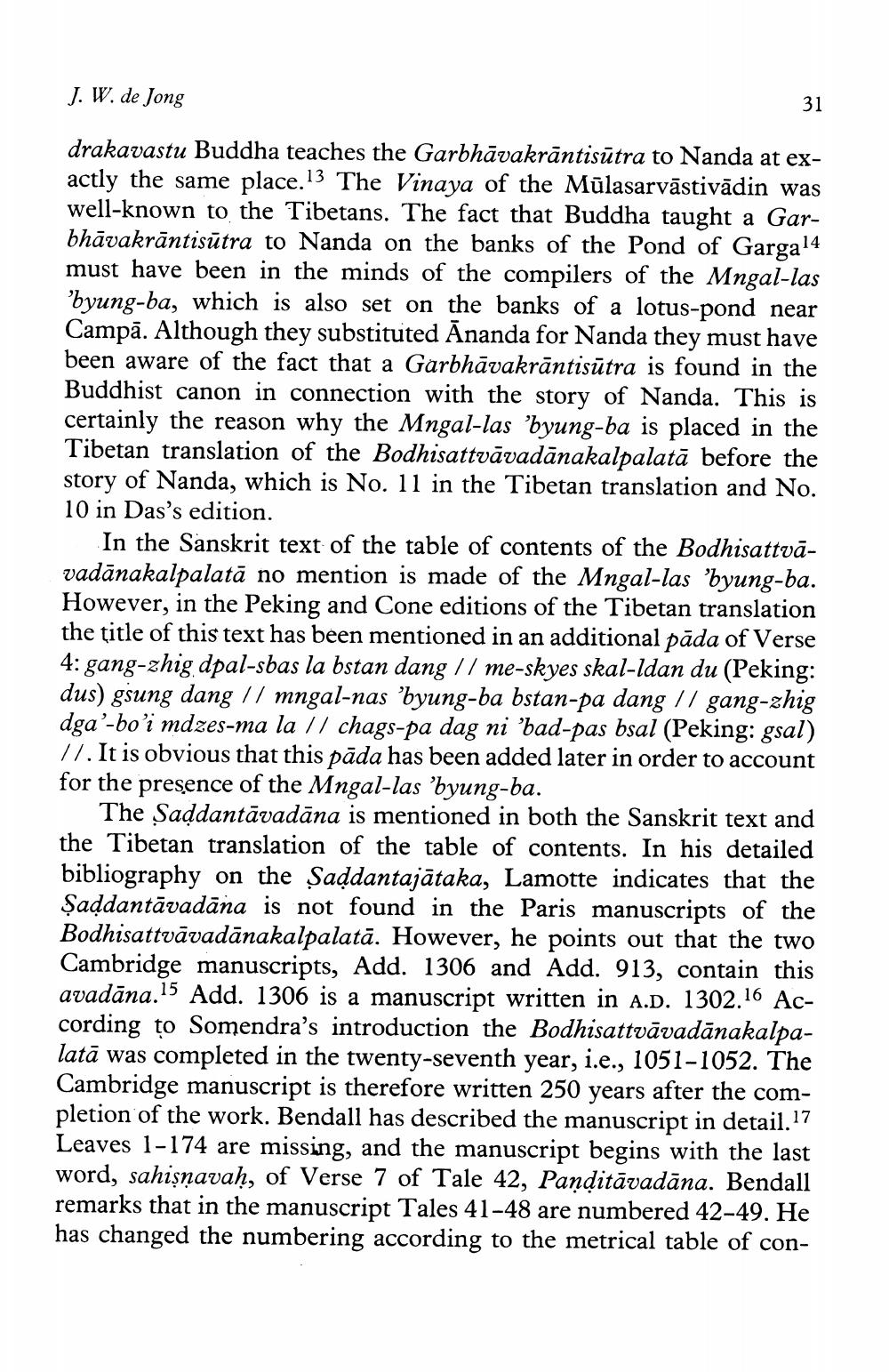Book Title: Bodhisattva Vadana Kalpalata And The Saddantavadana Author(s): J W De Jong Publisher: J W De Jong View full book textPage 5
________________ J. W. de Jong 31 drakavastu Buddha teaches the Garbhāvakrāntisūtra to Nanda at exactly the same place. 13 The Vinaya of the Mūlasarvāstivādin was well-known to the Tibetans. The fact that Buddha taught a Garbhāvakrāntisūtra to Nanda on the banks of the Pond of Garga14 must have been in the minds of the compilers of the Mngal-las 'byung-ba, which is also set on the banks of a lotus-pond near Campā. Although they substituted Ananda for Nanda they must have been aware of the fact that a Garbhāvakrāntisūtra is found in the Buddhist canon in connection with the story of Nanda. This is certainly the reason why the Mngal-las ’byung-ba is placed in the Tibetan translation of the Bodhisattvāvadānakalpalatā before the story of Nanda, which is No. 11 in the Tibetan translation and No. 10 in Das's edition. In the Sanskrit text of the table of contents of the Bodhisattvāvadānakalpalatā no mention is made of the Mngal-las ’byung-ba. However, in the Peking and Cone editions of the Tibetan translation the title of this text has been mentioned in an additional pāda of Verse 4: gang-zhig, dpal-sbas la bstan dang // me-skyes skal-ldan du (Peking: dus) gsung dang // mngal-nas ’byung-ba bstan-pa dang // gang-zhig dga’-bo’i mdzes-ma la // chags-pa dag ni 'bad-pas bsal (Peking: gsal) 17. It is obvious that this pāda has been added later in order to account for the presence of the Mngal-las ’byung-ba. The Saddantāvadāna is mentioned in both the Sanskrit text and the Tibetan translation of the table of contents. In his detailed bibliography on the Saddantajātaka, Lamotte indicates that the Şaddantāvadāna is not found in the Paris manuscripts of the Bodhisattvāvadānakalpalatā. However, he points out that the two Cambridge manuscripts, Add. 1306 and Add. 913, contain this avadāna.15 Add. 1306 is a manuscript written in A.D. 1302.16 According to Somendra's introduction the Bodhisattvāvadānakalpalatā was completed in the twenty-seventh year, i.e., 1051-1052. The Cambridge manuscript is therefore written 250 years after the completion of the work. Bendall has described the manuscript in detail. 17 Leaves 1-174 are missing, and the manuscript begins with the last word, sahişņavaḥ, of Verse 7 of Tale 42, Paņditāvadāna. Bendall remarks that in the manuscript Tales 41-48 are numbered 42-49. He has changed the numbering according to the metrical table of conPage Navigation
1 ... 3 4 5 6 7 8 9 10 11 12
